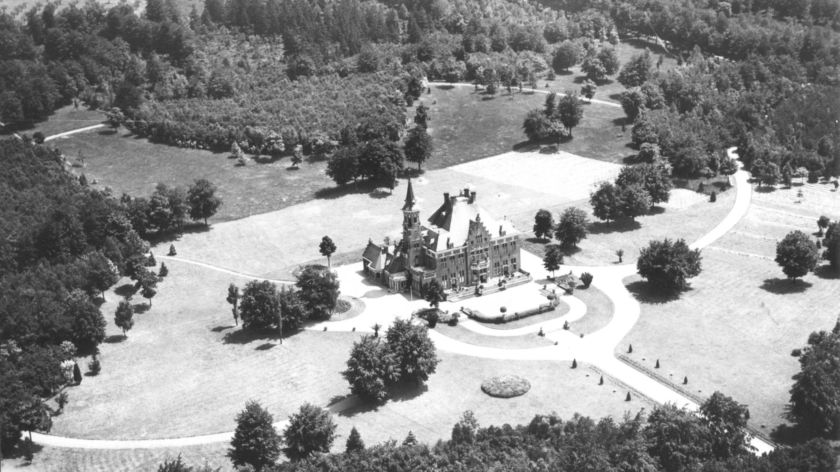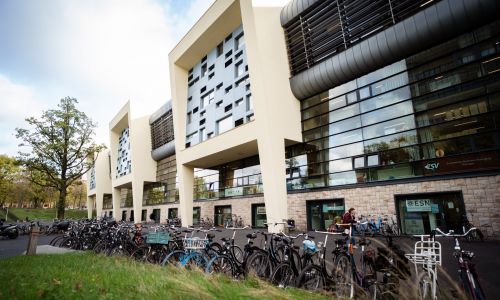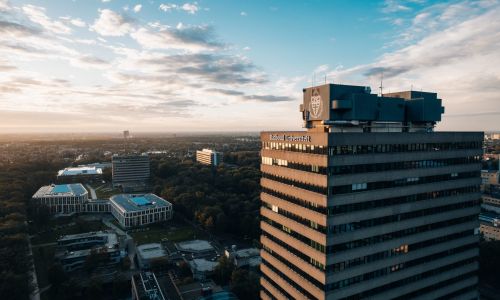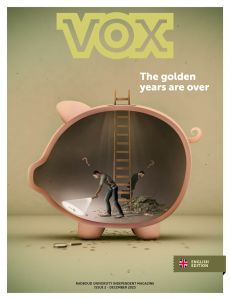Then & Now (5): Huize Heyendael in 1920
 Huize Heyendael in 1920. Foto: Regionaal Archief Nijmegen
Huize Heyendael in 1920. Foto: Regionaal Archief Nijmegen
Before the university had a campus, its buildings were spread throughout the city. In the framework of 95 years of Radboud University, Vox is taking a look at photo archives. What has changed? Today: Huize Heyendael.
The campus in Nijmegen is characterised by its open, green areas and an eclectic mix of buildings. The Erasmus building, for example, that towers above everything and everyone else, as well as modern buildings such as the Grotius and the dentistry building. But in between these modern university buildings is Huize Heyendael, one of the last reminders of what this area once used to look like. And in those days, it was even greener.
Expansion and growth
The fact that the Catholic University slowly began to shift from the centre of Nijmegen to the Heyendael estate in the 1950s resulted from the wish to establish a medical faculty. That ambition, which had existed ever since the university was founded in 1923, was financially impossible at the time. Only after denominational universities began to receive national subsidies in 1948 could the plan be realised. And the Sint-Radboudstichting then began to look for a new location to expand the university and accommodate the expected growth in the number of students.
The Heyendael estate seemed to be an ideal option. The estate and its villa were the property of Frans Jurgens, a descendent of the margarine manufacturing family that had established Unilever in 1929. In May 1949 Jurgens sold part of the estate for about half a million guilders. One of the conditions set by the family was that Huize Heyendael would be included in the sale.
From margarine to estate
After Frans Jurgens had bought the estate in 1912, he had Huize Heyendael built; construction was completed in 1914. In the middle of an English garden, a production forest and hunting grounds, the villa was the centre of the estate where Jurgens and his family lived. The architect Estourgie drew his inspiration for the villa from the Golden Age and the Peace Palace, which had recently been built in The Hague in 1913. This is reflected in the stepped gables and the natural stone. The interior is also very special since some aspects are much older than the building itself. There is painted wallpaper dating from 1736, and some of the wainscoting and ceilings are even a century older.
More kitsch than art
After having bought the estate, the university showed little interest in the cultural-historical value of the villa. In fact, when the Ministry of Culture, Recreation and Social Work wanted to put the villa’s interior on the list of monuments, the university board objected. They felt that the villa should be seen “as a failed attempt to provide the designated family with an imposing home by combining many architectural styles seen elsewhere.” Nor was there much appreciation for the interior: “The whole is more kitsch than art.” But the villa was nevertheless included on the list, and admiration for it quickly grew. To cite Willy van Lieshout, chair of the executive board (1974-1993): “The KUN is a young university. So it’s always nice to have something old, even if old is only a hundred years.”
With thanks to Jan Brabers, university historian. Marjolein van Diejen took the photo of ‘now’. Photo ‘then’: Regional Archive Nijmegen
Source: http://www.ru.nl/facultyclub/welkom/geschiedenis/ and Rob Wolf, De Trek naar het zuiden: gebouwen van de Katholieke Universiteit Nijmegen 1923-1998 (Nijmegen 1998).



